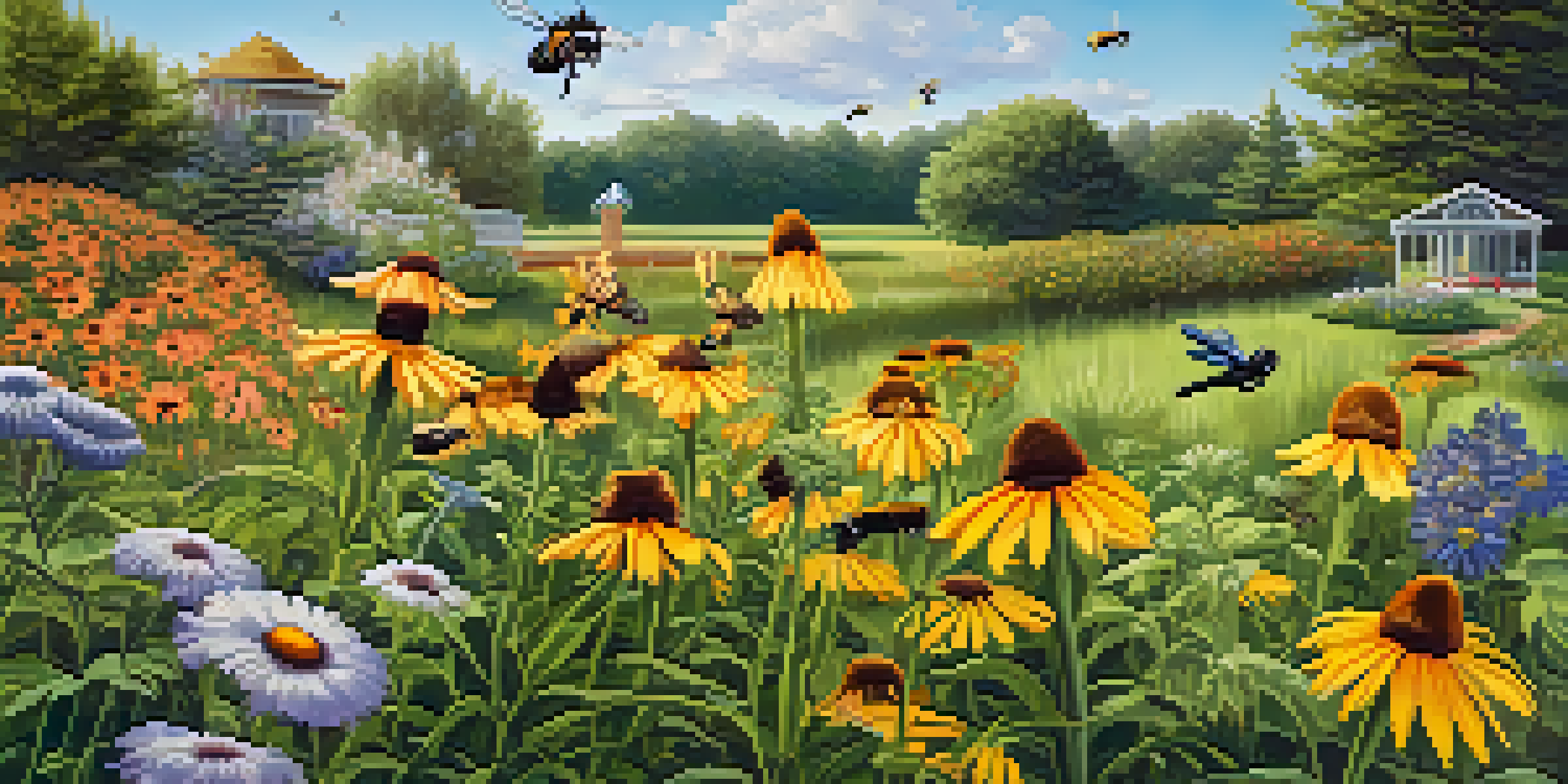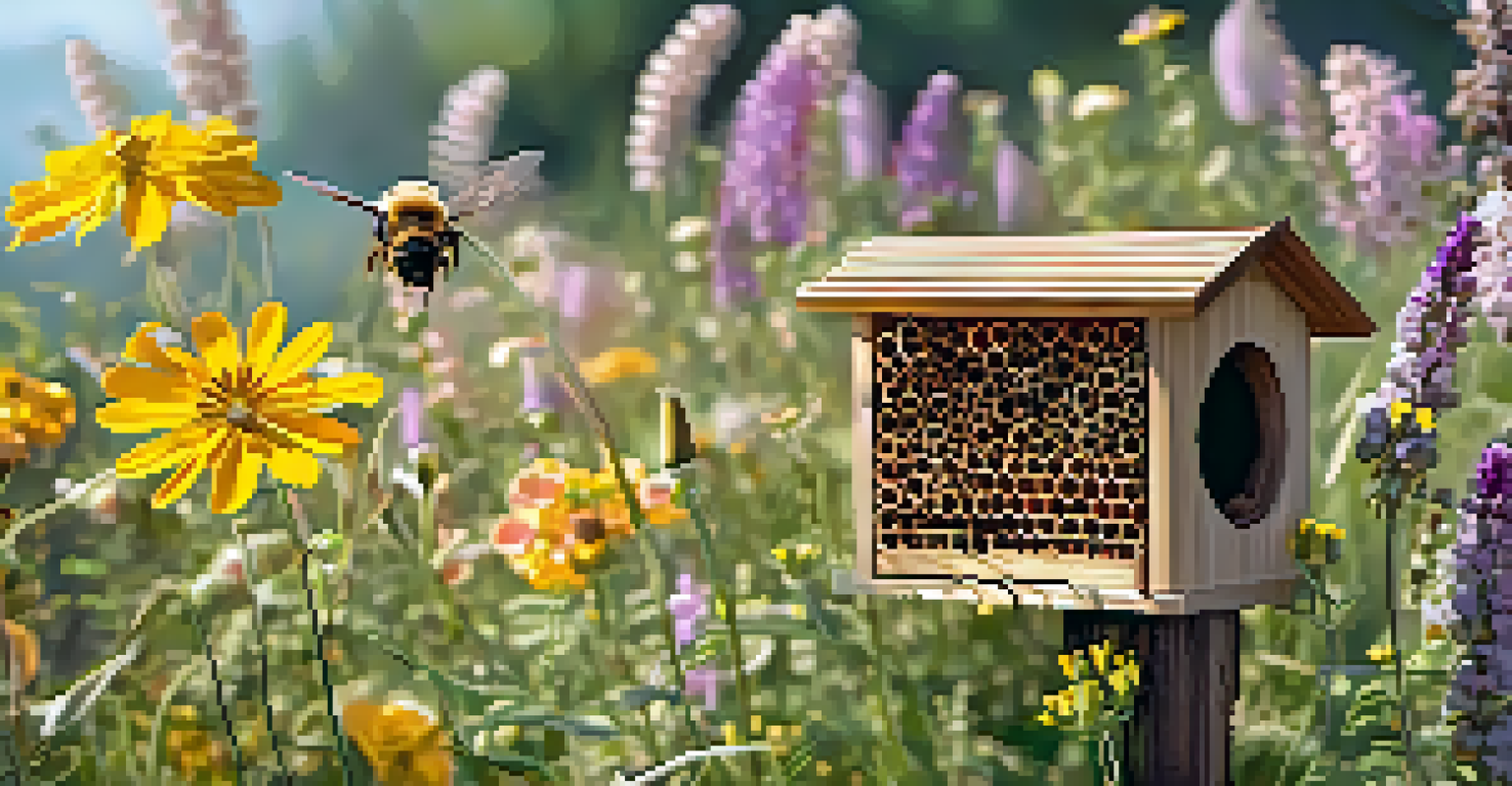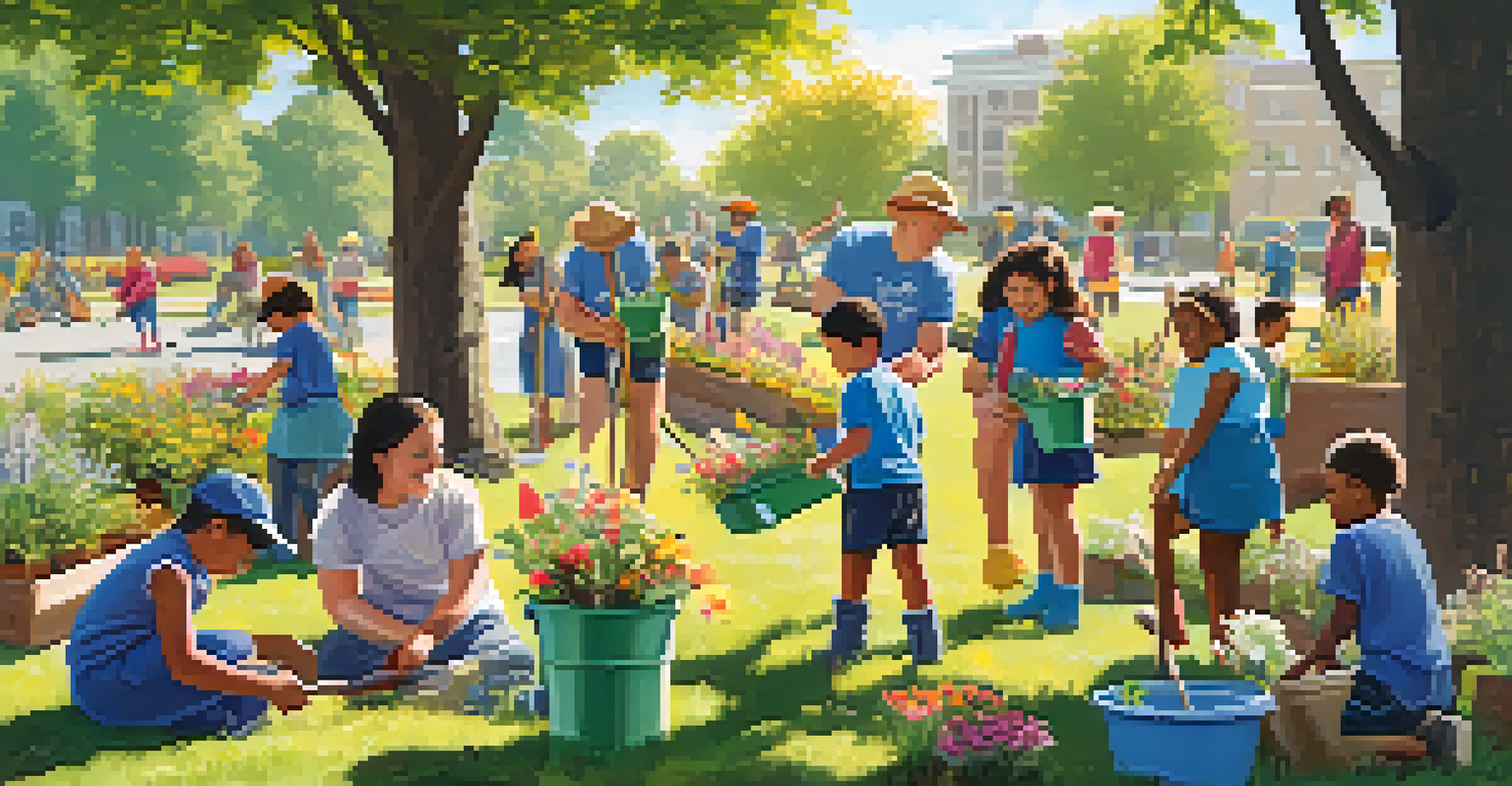Creating Pollinator Gardens to Support Biodiversity Adaptation

Understanding the Importance of Pollinators
Pollinators like bees, butterflies, and hummingbirds play a crucial role in our ecosystems. They are responsible for the pollination of many plants, which not only helps in food production but also supports overall biodiversity. Without these vital creatures, many of the plants we rely on for food would struggle to reproduce, leading to a cascading effect on the entire food chain.
If we can teach people about wildlife, they will be touched. They will see that it’s not just a bunch of animals. It’s a world we live in and a world we can protect.
The decline in pollinator populations due to habitat loss, pesticide use, and climate change is alarming. By recognizing the importance of these creatures, we can take proactive steps to support their survival. Creating pollinator gardens is one effective way to do just that, providing essential habitats and food sources for these important species.
In addition to benefiting pollinators, these gardens also enhance our own environment. They contribute to local biodiversity, improving soil health and providing habitats for other wildlife. Essentially, when we support pollinators, we’re supporting a healthier planet.
Choosing the Right Location for Your Garden
Selecting an ideal spot for your pollinator garden is crucial for its success. Look for a sunny area, as most pollinators thrive in warm environments. A location that receives at least six hours of sunlight daily is perfect, allowing flowers to bloom and attract insects naturally.

Consider also the accessibility of water sources. Pollinators need hydration, so including a small water feature or even a shallow dish filled with pebbles and water can be beneficial. Additionally, think about wind protection; placing your garden near a natural windbreak, like a hedge or fence, can help create a more hospitable environment.
Pollinators Are Essential for Ecosystems
Pollinators like bees and butterflies play a vital role in food production and biodiversity.
Lastly, ensure your garden is away from heavy foot traffic or disturbances. A peaceful and quiet area will encourage pollinators to visit regularly and feel safe in their surroundings. By providing a welcoming habitat, you'll increase the chances of attracting a diverse range of pollinating species.
Selecting the Best Plants for Pollinators
When it comes to selecting plants for your pollinator garden, diversity is key. Different pollinators are attracted to different types of flowers, so incorporating a variety of plants will support a wider range of species. Aim to include a mix of native flowers, herbs, and shrubs that bloom at different times throughout the growing season.
To forget how to dig the earth and to tend the soil is to forget ourselves.
Native plants are particularly beneficial as they are well-adapted to the local environment and provide the specific nutrients that local pollinators need. For instance, coneflowers, milkweed, and black-eyed Susans are excellent choices that attract butterflies and bees. By prioritizing native flora, you create a more sustainable ecosystem in your garden.
Additionally, consider the structure of your plants. Some pollinators prefer flat-topped flowers for easy access, while others are drawn to tubular flowers. By mixing plant types, you create a buffet of options that cater to different pollinator preferences, ensuring your garden is a thriving hub of activity.
Creating Nesting Sites for Pollinators
While flowers are essential for feeding pollinators, providing nesting sites is equally important. Many solitary bees, for example, do not live in hives and instead require specific habitats to lay their eggs. You can create nesting sites by leaving areas of bare soil, as some species prefer to burrow into the ground.
Another great option is to install bee hotels, which are man-made structures designed to attract solitary bees. These can be as simple as a block of wood with drilled holes or more elaborate designs with different sized tubes. By incorporating these structures, you give pollinators a safe place to rest and reproduce.
Diverse Plants Support More Pollinators
Including a variety of native plants in your garden attracts a wider range of pollinating species.
Don’t forget about other pollinators, too! For butterflies, providing host plants where caterpillars can feed is vital. By including plants like milkweed and parsley in your garden, you ensure that both adult butterflies and their larvae have the resources they need to thrive.
Watering and Maintenance for Your Garden
Once your pollinator garden is established, regular maintenance is crucial to keep it thriving. Watering is particularly important during dry spells, as pollinators need hydration just like any other living being. Providing a shallow water source, such as a birdbath or small pond, can attract more visitors to your garden.
Weeding and mulching are also essential tasks. Weeds can compete with your flowering plants for resources, so keeping them in check ensures your pollinator-friendly plants have the space they need to flourish. Mulching helps retain moisture and suppresses weeds, making it a win-win for your garden.
Lastly, avoid using pesticides and herbicides, as these can harm pollinators and disrupt the delicate balance of your garden ecosystem. Instead, consider organic methods of pest control, such as introducing beneficial insects or using natural repellents, to keep your garden healthy while protecting its vital inhabitants.
Engaging Your Community in Pollinator Support
Creating a pollinator garden can be even more rewarding when you engage your community. Hosting workshops or informational sessions about the importance of pollinators and how to create gardens can inspire others to join in the effort. By spreading knowledge, you can help cultivate a collective understanding of biodiversity’s critical role in our ecosystems.
You might also consider organizing community planting days. These events not only make the process more enjoyable but also foster a sense of camaraderie. When people come together to plant flowers that support pollinators, they build connections while positively impacting their local environment.
Community Involvement Enhances Impact
Engaging your community in pollinator garden initiatives fosters awareness and collective action for biodiversity.
Finally, use social media to share your progress and successes. Documenting your journey can encourage others to take similar steps, creating a ripple effect of awareness and action. When communities unite for a common cause, the potential for positive change grows exponentially.
The Long-Term Benefits of Pollinator Gardens
While establishing a pollinator garden requires effort, the long-term benefits are well worth it. These gardens not only support local pollinator populations but also contribute to the overall health of the environment. As more flowers bloom and more wildlife thrives, the ecosystem becomes more resilient to the challenges posed by climate change.
Furthermore, pollinator gardens enhance the beauty of our surroundings. They provide vibrant colors, delightful fragrances, and the soothing sounds of nature, transforming ordinary spaces into lively habitats. Whether in your backyard or a community park, these gardens can inspire joy and wonder in everyone who visits.

Finally, a thriving pollinator garden can serve as an educational tool. It provides an opportunity for people, especially children, to learn about ecology, conservation, and the interconnectedness of life. By nurturing a love for nature, we can inspire future generations to prioritize biodiversity, ensuring a healthier planet for years to come.